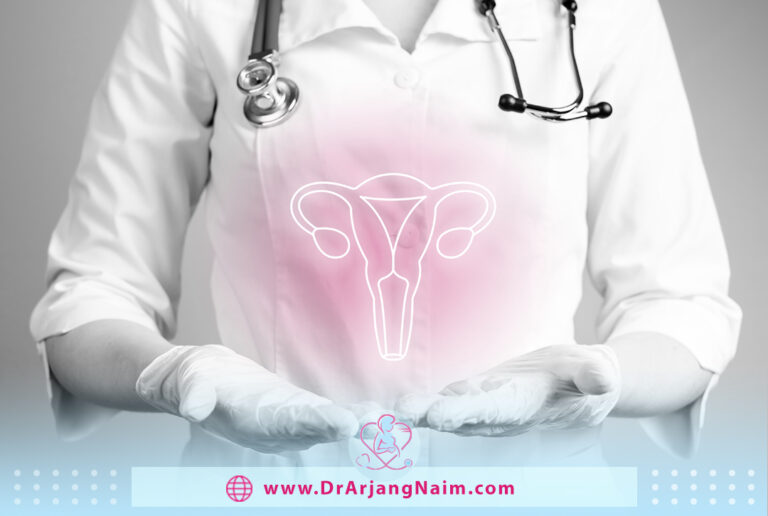Gynecologic cancer refers to a group of cancers originating in the female reproductive system, including the cervix, ovaries, uterus, fallopian tubes, vulva, and vagina. These cancers can be highly variable regarding their symptoms, risk factors, and treatment options.
Common gynecologic cancers include cervical, ovarian, uterine, and vaginal cancer, each with unique characteristics. Regular screenings and early detection are crucial in managing these cancers, as they can often be more effectively treated in their early stages. Advances in medical research and treatment have improved the outcomes for individuals diagnosed with gynecologic cancers, offering hope and improved quality of life for those affected by these diseases.
Types of gynecological cancers
Every woman is at risk of developing gynecological cancers. The risk of developing this cancer increases with age. Treatment may be effective if detected early.
Uterine cancer
Uterine cancer, also known as endometrial cancer, is a type of gynecologic cancer that originates in the lining of the uterus, called the endometrium. It is the most common cancer of the female reproductive system. Uterine cancer typically presents with symptoms like abnormal vaginal bleeding, pelvic pain, or a feeling fullness in the lower abdomen. Risk factors for uterine cancer include obesity, hormonal imbalances, and a history of conditions like polycystic ovary syndrome or diabetes. Treatment options for uterine cancer often involve surgery to remove the uterus (hysterectomy), radiation therapy, chemotherapy, and hormone therapy, depending on the stage and type of cancer. Early diagnosis and treatment are key to successful outcomes, and regular check-ups with a healthcare provider can aid in its early detection.
Cervical cancer
Cervical cancer is a type of gynecologic cancer that begins in the cells of the cervix, the lower part of the uterus that connects to the vagina. It is often associated with persistent infection by certain strains of the human papillomavirus (HPV). Cervical cancer typically develops slowly over time, and routine screenings, such as Pap smears and HPV testing, can help detect precancerous changes in the cervix before they progress to cancer. Common symptoms of cervical cancer may include abnormal vaginal bleeding, pelvic pain, or pain during intercourse. Treatment options for cervical cancer depend on the stage of the disease and can involve surgery, radiation therapy, chemotherapy, or a combination of these methods. The widespread availability of HPV vaccines and regular screening have significantly reduced the incidence of cervical cancer, highlighting the importance of early detection and prevention.

Ovarian cancer
Ovarian cancer is a gynecologic cancer in the ovaries, the female reproductive organs responsible for producing eggs and hormones. It is often called the “silent killer” because it tends to show few, if any, early symptoms and is usually diagnosed at an advanced stage. When symptoms do occur, they can include abdominal pain, bloating, changes in bowel or bladder habits, and feelings of fullness.
The exact causes of ovarian cancer are not well understood, but risk factors may include:
- A family history of the disease.
- Specific genetic mutations (such as BRCA1 and BRCA2).
- A history of infertility or endometriosis.
Diagnosis typically involves imaging studies and blood tests to detect markers like CA-125. Treatment options for ovarian cancer may include surgery to remove the tumor, chemotherapy, and, in some cases, radiation therapy.
Early detection is challenging, and as a result, ovarian cancer often has a lower survival rate than other gynecologic cancers. Research and awareness efforts continue to improve understanding, prevention, and treatment of this disease.
Vulvar cancer
Vulvar cancer is a relatively rare gynecologic cancer in the external female genitalia, specifically the vulva. This cancer can affect the labia (the inner and outer lips of the genitalia), clitoris, and the vaginal opening. Vulvar cancer typically manifests as a lump, sore, or abnormal growth on the vulvar skin, accompanied by symptoms like itching, pain, and changes in color or texture. Risk factors for vulvar cancer include chronic skin conditions, human papillomavirus (HPV) infection, smoking, and a weakened immune system.
Diagnosis involves a physical examination and may require a biopsy to confirm the presence of cancerous cells. Treatment options for vulvar cancer vary depending on the stage and extent of the disease but often include surgery to remove the tumor and surrounding tissue. Radiation therapy and chemotherapy may be used in some cases as well. Early diagnosis and treatment significantly improve the chances of a successful outcome, making regular check-ups and awareness of any changes in the vulvar area crucial in the fight against vulvar cancer.
Vaginal cancer
Vaginal cancer is a rare type of gynecologic cancer that originates in the tissues of the vagina, the muscular tube connecting the cervix to the external genitalia. This cancer is often categorized into two main types: squamous cell carcinoma, which develops in the squamous cells lining the vagina, and adenocarcinoma, which starts in the glandular cells of the vagina.
Vaginal cancer can present with symptoms such as vaginal bleeding, pain during intercourse, vaginal discharge, and pelvic pain. Risk factors include a history of HPV infection, previous radiation therapy in the pelvic area, and exposure to diethylstilbestrol (DES) in utero.
Diagnosis typically involves a pelvic exam, biopsy, and imaging studies to determine the extent of the cancer. Treatment options for vaginal cancer may include surgery to remove the tumor, radiation therapy, and chemotherapy, either alone or in combination, depending on the stage and type of cancer.
Vaginal cancer is relatively uncommon, and early detection is crucial for improving treatment outcomes. Regular gynecological check-ups and awareness of unusual vaginal symptoms are important for early diagnosis and management.
Fallopian tube cancer
Fallopian tube cancer, or tubal cancer, is a rare form of gynecologic cancer originating in the fallopian tubes, the slender tubes connecting the ovaries to the uterus. This type of cancer is uncommon and often goes undetected until it reaches an advanced stage.
Common symptoms of fallopian tube cancer include abdominal pain, bloating, abnormal vaginal bleeding, and changes in menstrual patterns. Risk factors for this cancer are not well-defined. Still, it may be associated with a family history of breast or ovarian cancer and certain genetic mutations, such as BRCA1 and BRCA2.
Diagnosis usually involves imaging studies, like CT scans and ultrasounds, and may require a biopsy to confirm the presence of cancerous cells. Treatment for fallopian tube cancer typically requires surgery to remove the affected tube and surrounding tissue. In some cases, chemotherapy may be recommended, especially for advanced stages of the disease.
Early detection is challenging, and as with other gynecologic cancers, regular check-ups and awareness of any unusual symptoms in the pelvic area are crucial in managing and treating fallopian tube cancer.
Gestational trophoblastic tumor
A gestational trophoblastic tumor (GTT) is a rare type of cancer that develops from the abnormal growth of cells in the tissue that normally forms the placenta during pregnancy. There are several subtypes of GTT, including:
- Hydatidiform Mole: This is the most common subtype, where the placental tissue develops abnormally and results in a non-viable pregnancy. Most hydatidiform moles are benign and do not become cancerous. However, a small percentage can progress to become invasive moles or choriocarcinomas.
- Invasive Mole: In some cases, a hydatidiform mole may invade the uterine wall, requiring treatment as a precursor to cancer.
- Choriocarcinoma: Choriocarcinoma is a highly malignant and aggressive form of GTT that can develop after a molar pregnancy, miscarriage, or even a normal pregnancy. It rapidly spreads and requires prompt treatment.
- Placental-site Trophoblastic Tumor (PSTT): PSTT is a rare form of GTT originating in the tissue that connects the placenta to the uterine wall.
GTTs can produce a hormone called human chorionic gonadotropin (hCG), which is often monitored to track the response to treatment. Treatment typically involves surgical removal of the tumor and, in some cases, chemotherapy. The prognosis for GTT is generally favorable, especially with early diagnosis and appropriate management.
These tumors are usually detected during or after pregnancy, and close medical follow-up is crucial for their early identification and treatment, as they can mimic the signs and symptoms of a normal pregnancy.
Risk factors
Gynecologic cancers can have various risk factors that increase the likelihood of their development. These risk factors can differ for different types of gynecologic cancers.
Age
Advancing age is a significant risk factor for many gynecologic cancers, such as ovarian, uterine, and cervical cancer. The risk generally increases with age.
Family history
A family history of gynecologic cancers, especially ovarian and breast cancers, can elevate the risk due to possible inherited genetic mutations like BRCA1 and BRCA2.
Genetic mutations
Specific genetic mutations, like BRCA1 and BRCA2, are linked to an increased risk of ovarian and breast cancers. Lynch syndrome can raise the risk of uterine and ovarian cancers.
Personal history
Women with gynecologic cancers are at a higher risk of developing them again.
Human Papillomavirus (HPV) Infection
HPV infection, particularly high-risk strains, is a significant risk factor for cervical cancer. HPV vaccines are available to reduce this risk.

Obesity
Obesity is linked to an increased risk of several gynecologic cancers, including uterine cancer, as it can lead to hormonal imbalances.
Reproductive factors
Early menstruation, late menopause, not having children, or having the first child at a late age can impact the risk of gynecologic cancers.
Hormone replacement therapy (HRT)
Long-term use of hormone replacement therapy, particularly estrogen alone without progesterone, can increase the risk of uterine cancer.
Smoking
Smoking is a risk factor for several gynecologic cancers, including cervical and vulvar.

Diet
Poor diet and lack of certain nutrients may increase the risk of gynecologic cancers, particularly uterine cancer.
Environmental factors
Exposure to environmental toxins and pollutants may contribute to the development of gynecologic cancers, although the links are not always clear.
It’s important to note that having one or more risk factors does not guarantee the development of gynecologic cancer. Many women with these risk factors never develop cancer, and many women without apparent risk factors do. Regular screenings and preventive measures, such as HPV vaccination and a healthy lifestyle, can help reduce the risk and promote early detection.
Preventing gynecologic cancer
Knowing your risk for gynecological cancer is essential, as is getting recommended tests, screenings, and vaccines that are available for prevention.
Pap test
The Pap test is the most valuable cervical cancer screening tool, especially with HPV testing. Pap smears and HPV tests can detect precancerous changes in the cervix before they turn into cancer.
Healthy diet and lifestyle
Given that obesity is known to be an essential risk factor for endometrial cancer, it is important to maintain a healthy diet and lifestyle.
Genetic testing
There are many indications for genetic counseling and testing, and women should review their family history regularly with their doctor to understand their individual needs.
In general, women with a family history of ovarian cancer or breast cancer before menopause (breast cancer before the age of 45) and women with a history of endometrial or colon cancer before age 50 should see a genetic counselor.

HPV vaccine
HPV vaccine has been a valuable tool in the prevention of cervical cancer. Vaccination has reduced the rate of HPV in teenage girls by 63% and for women aged 20-24 by 34%. Reducing the amount of HPV, in turn, reduces the incidence of cervical cancer.
The bottom line
Gynecologic cancers encompass a group of malignancies that originate in the female reproductive system, including the cervix, ovaries, uterus, fallopian tubes, vulva, and vagina. Each type of gynecologic cancer presents its unique symptoms, risk factors, and preventive measures. Regular screenings, early detection, and lifestyle choices play a pivotal role in preventing and managing these cancers. Vaccination against the human papillomavirus (HPV) and healthy lifestyle practices, such as maintaining a balanced diet, regular exercise, and quitting smoking, can help reduce the risk. Routine screenings and medical check-ups are crucial for early diagnosis and improved treatment outcomes. Advances in medical research and treatment options have led to better prospects for those affected by gynecologic cancers, emphasizing the importance of awareness and proactive healthcare.
Additional questions
- What happens after an abnormal pap test?
The next steps after an abnormal Pap test depend on the specific findings. In many cases, mild abnormalities may resolve on their own, so a repeat Pap test may be recommended. If abnormalities persist or are more severe, further colposcopy and cervical biopsy evaluation may be necessary to assess the presence of precancerous or cancerous cells.
- What are the treatment options after an abnormal Pap test?
Treatment options following an abnormal Pap test vary based on the severity of the abnormalities. A repeat Pap test might be advised for mild cases, while more severe abnormalities could require a colposcopy to assess the cervix. Cervical biopsies confirm the extent of abnormalities, and if precancerous cells are identified, treatments such as LEEP or cone biopsy can remove them. Monitoring through follow-up tests is often necessary to ensure the effectiveness of treatment. It’s essential to consult with your healthcare provider to determine the best course of action tailored to your specific situation, as early intervention can prevent cervical cancer.
- What are the symptoms of female cancers?
Gynecologic cancers can manifest various signs and symptoms but often overlap with other common health issues. It’s important to pay attention to any persistent or unusual changes in your gynecologic health and seek medical evaluation if you experience:
- Abnormal vaginal bleeding
- Pelvic pain
- Vaginal discharge
- Changes in bowel or bladder habits
- Pain during intercourse
- Pelvic mass
- Back pain
- Unexplained weight loss
- Fatigue
- Abdominal swelling or bloating
- What are screening tests for gynecological cancers?
The screening tests for gynecological cancers are:
- Colposcopy
- Cervicography
- HPV testing
- Polarprobe or Tuscan
- Ovarian carcinoma screening
- Biochemical markers
- Proteomic technology
- Examination of the pelvic area
- Ultrasonography
- CA125
- Genetic screening
- What are the ways to diagnose Gynecologic Cancer?
- Medical history and physical examination
- Pap test
- HPV testing
- Imaging studies
- Biopsy
- Cytology
- Genetic testing
- Biopsy of nearby lymph nodes
References
https://www.hopkinsmedicine.org/health/wellness-and-prevention/my-pap-test-was-abnormal-now-what
https://foundationforwomenscancer.org/gynecological-cancers/gynecologic-cancer-types/
https://www.pennmedicine.org/cancer/types-of-cancer/fallopian-tube-cancer
https://www.shreeivfclinic.com/gynaecology-cancer/
https://www.fredhutch.org/en/diseases/gynecologic-cancer.html




